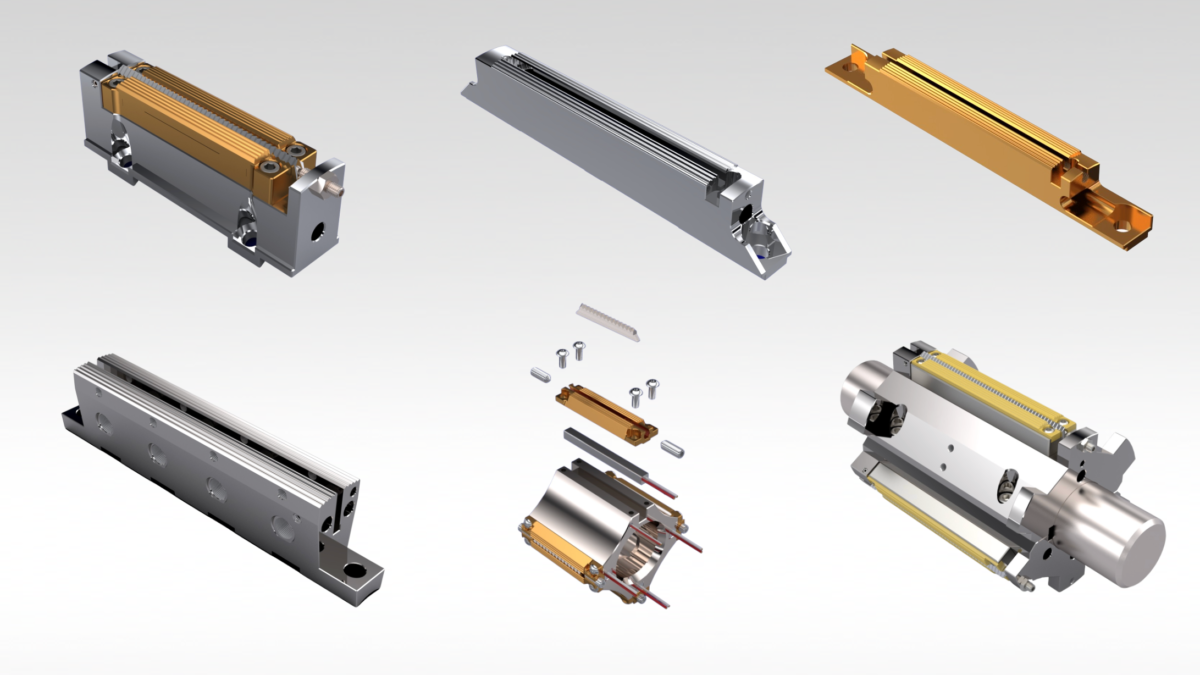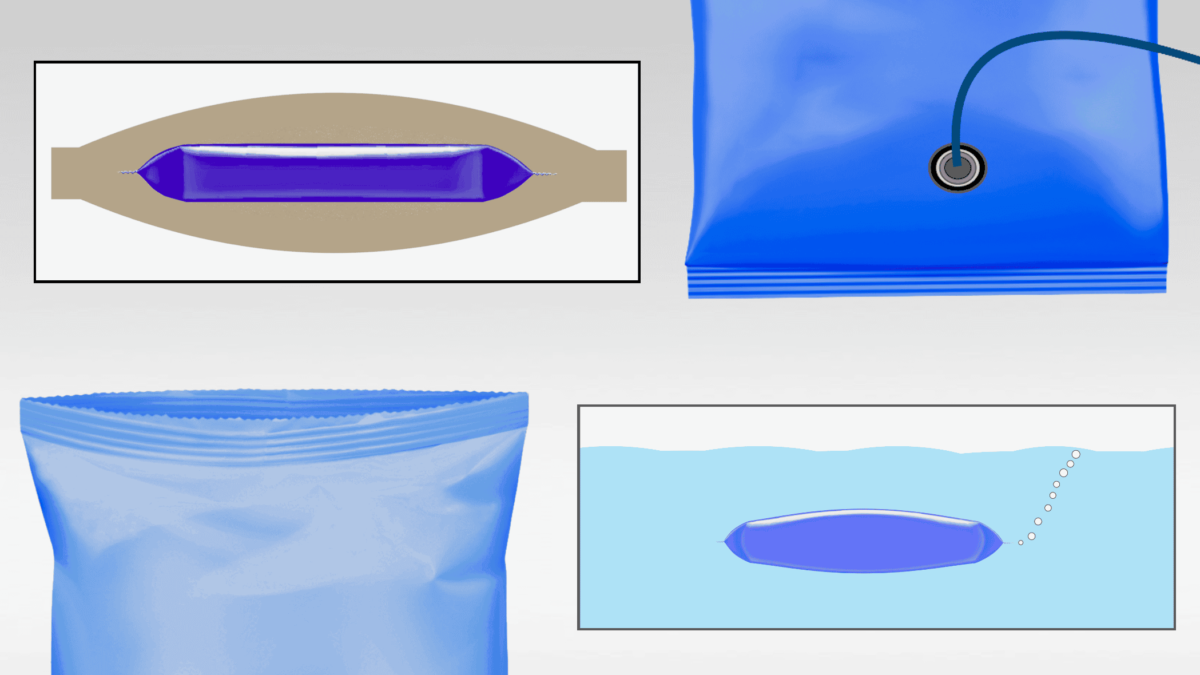For heat seal applications, each packaging film structure has a Seal Initiation Temperature (SIT), at which the sealant layer is heated enough to flow into and seal off gaps in the end seal and provide a minimally acceptable seal, and a Maximum Temperature, beyond which the film distorts, fractures, or has inadequate hot tack (seal strength and integrity while the seal is still warm). The temperature range between the minimum and maximum is the film’s Operating Window.
For a number of reasons, regulating heat is not as straightforward as simply adjusting the temperature setting within the operating window for the film you are running.
♦ The sealing face of crimpers and sealing jaws is often hotter in the middle than at the ends, where heat dissipates more quickly. These inconsistencies are readily apparent in the thermal profile shown below:

If the package extends into the cooler areas of the sealing face, temperature settings high enough to seal the outer ends of the package can overheat the center and cause distorted, leaking seals and poor hot tack. These temperature inconsistencies are one reason why seal separation, or “mooning,” typically occurs at the center of the end seal.
♦ The temperature readout at the controller does not usually reveal heat inconsistencies across the length of the sealing face, since thermocouples read the temperature at only one point within the crimper or sealing jaw body. The best way to check for these heat issues is with a pyrometer, at multiple points across the sealing face:

♦ The temperature of the sealing face on crimpers or jaws at rest should remain fairly consistent, depending on the responsiveness of the temperature controller. At production speeds, however, there is limited dwell time for the crimpers or jaws to interface and transfer heat to the sealant layer, which can be especially problematic where there are extra layers of film from the fin seal, lap seal, gussets, or wrinkles. The sealing face loses heat as it seals each package and then has limited time to recover before the next package has to be sealed. Charted over time, the temperature of the sealing face rises and falls with each package.
Since dwell time and recovery time are limited, temperature must often be set higher than the actual operating window for the film structure. This differential can cause problems when the line slows down or temporarily stops; with additional time for heat transfer and thermal recovery the sealing face can overheat, causing distortion, splits, and leaks in the end seal.
To provide the most consistent, responsive heat transfer:
♦ Start by keeping your crimpers and sealing jaws free of product contamination—even minimal coatings can impede heat transfer. (See Cleaning to Improve Package Quality and Productivity.)
♦ Make sure you coat all heaters and thermocouples with a silicone based heat sink compound before installing them. This will ensure better surface contact between heaters and the crimpers or jaws, providing better heat transfer and more accurate temperature readings.
♦ Switch to preferentially wound heaters, which provide more consistent temperatures across the sealing face. They are hotter near the ends to compensate for typical heat loss there.
♦ Upgrade to Greener’s Dura-Therm crimpers and sealing jaws, which provide more consistent, responsive heat transfer without sacrificing durability. Users of Dura-Therm crimpers and jaws report temperature readings within +/- 3° F across the sealing face and have been able to lower their temperature settings by 10 – 15%, resulting in a decrease in leakers and cosmetically flawed packages caused by heat issues.

Test results of thermal profiles, illustrated below, clearly show the temperature consistency of Dura-Therm crimpers compared to the temperature variation of crimpers made from stainless steel:


In addition to heat and time, proper pressure is also necessary to achieve consistent, quality seals. For more details see our earlier post, Clearance and Pressure on Horizontal Wrappers: What’s the Difference?
• Do you find Greener Corporation’s Technical Resource Blog helpful? Please use the links below to subscribe, and contact us if you would like more information.


